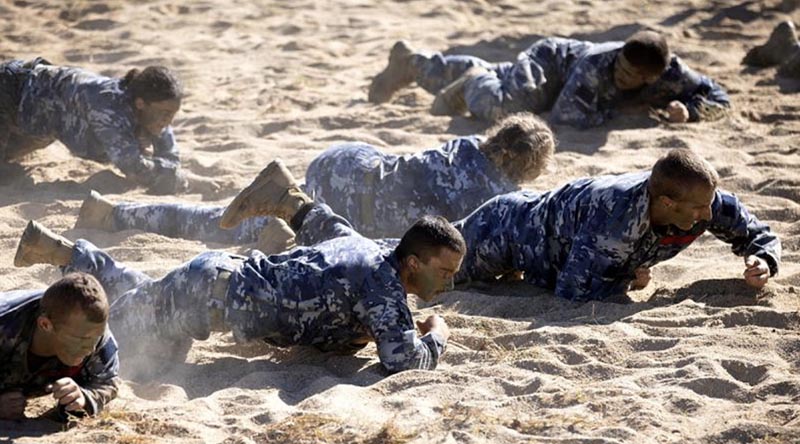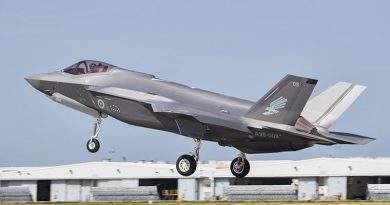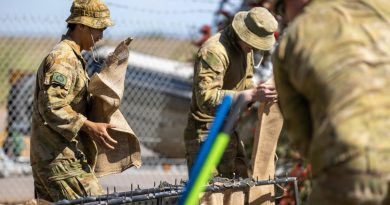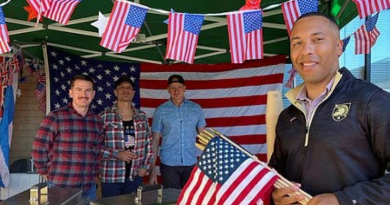Making aviators fitter and stronger faster

Underneath the words Fit to Fight, a flight of recruits are marched into the 1 Recruit Training Unit (1RTU) gymnasium to conduct their initial fitness test.
CAPTION: RAFF [sic] recruits take part in the confidence course at 1 Recruit Training Unit. Story and photo by Private Nicholas Marquis.
With padded mats laid out, the push up test begins.
Despite a move to a nine-week course, recruits are receiving more physical training than before with a strong focus on strength and conditioning.
Physical training instructor Corporal Mark Theron sees only positive changes in the recent overhaul of the physical component at 1RTU.
“The goalposts are always shifting. Towards the end of 2021, the baseline marker was just physical fitness test passing,” Corporal Theron said.
“That’s still one of our main objectives, but we’re now trying to instil longevity in our recruits.
“As opposed to getting them really good at push-ups and sit-ups, we are actually teaching them basic movement methods that they can take on operations and through their whole career.”
Civilian physiotherapists have also been brought in to minimise recruits’ time in medical.
“Previously, if someone presented to us with an injury we’d send them to medical and you would lose them for that session,” Corporal Theron said.
“There are always going to be injuries out field, some preventable and some not – that’s the nature of the beast.
“We are trying to make everyone better through individualisation.”
Introducing the isometric mid-thigh pull has allowed staff to measure strength and power of incoming recruits.
In the form of a deadlift, recruits pull on a fixed barbell while generating downward pressure on a force plate which tests the immediate peak force they generate.
Physical training instructor Corporal Steven Baker said that before this, there wasn’t a way of testing overall body strength.
“You can literally put anyone on it. It’s safe because they’re not moving,” Corporal Baker said.
“There is zero skill to it, it’s purely looking at your strength ability rather than your skill ability.”
Results are instantaneous and recorded on a digital profile so a comparison can be drawn from the first day a recruit arrives at 1RTU to their graduation.
A 2021 survey showed recruits were walking up to 10km a day which correlated to a high rate of musculoskeletal injury.
A ‘shoes to boots’ program was devised by the physios to mitigate these injuries and allowed recruits to acclimatise to new footwear.
Introduction of accelerometers has helped balance load during drill lessons, while an app tracks their mental-health fitness.
“We’re looking at mental health, nutrition and wellness feedback,” Corporal Theron said.
“It’s not all just physical – we are looking at how to create a better person and then aviators overall.”
.
.

.
.






This is a great idea prevention is always better than the cure, whether physical or mental.
Still having a trouble adjusting to these guys being “aviators”. Not sure I would have been thrilled with the idea when I was an “airman”.
Times change, got to move on…..